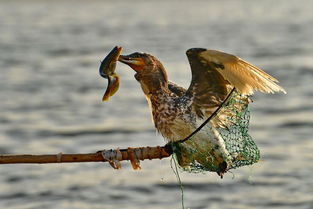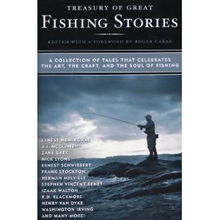Content:
In the realm of angling, traditional fishing techniques have stood the test of time, offering anglers a wealth of knowledge and experience. One such technique is the art of attracting fish to a specific location using baits, commonly referred to as "baiting" or "setting up a bait station." This article delves into the traditional methods of how to effectively use baits to draw in fish, ensuring a successful fishing experience.
Understanding the Basics of Baiting
Before delving into the specifics of traditional baiting techniques, it's essential to understand the basics. Baits are substances used to attract fish to a particular area, often in the hope of catching them. These can range from natural materials like corn, bread, or worms, to artificial lures designed to mimic the movement of prey. The key to successful baiting lies in understanding the habits and preferences of the fish species you're targeting.
Choosing the Right Bait
The first step in mastering traditional baiting is selecting the right bait. Different fish species have varying preferences, so it's crucial to do your research. Here are some common baits and their typical applications:
Live Bait: Live bait, such as worms, minnows, or crayfish, is highly effective for many species. These baits are often preferred due to their natural movement and scent, which can attract fish from a distance.
Artificial Lures: Artificial lures, like spinners, jigs, or crankbaits, are designed to mimic the movement of real prey. They are a great choice for species that are more likely to strike at a moving target.
Natural Substances: Natural substances like corn, bread, or oatmeal can be used to attract fish that are bottom feeders or those that are looking for easy meals.
Commercial Baits: There are numerous commercial baits available on the market, ranging from paste baits to liquid attractants. These can be a great option if you're unsure about the specific preferences of the fish in your area.
The Art of Setting Up a Bait Station
Once you've chosen the right bait, the next step is to set up a bait station. This involves the following steps:
Selecting the Location: Choose a location that is known to be frequented by the fish species you're targeting. This could be a rock, a tree, a bridge, or any other structure that fish are likely to congregate around.
Distributing the Bait: Distribute your bait evenly around the area. If you're using live bait, you may want to place it in a way that mimics the natural movement of the prey. For artificial lures, cast them out in a pattern that covers a wide area.
Maintaining the Bait Station: Regularly check on your bait station to ensure it's still attracting fish. If you notice that the bait is disappearing quickly, it may be time to replenish it.
Traditional Baiting Techniques
Now that you have a basic understanding of baiting, let's explore some traditional techniques that can help you master the art:
The "Casting Method": This involves casting your bait out into the water and retrieving it at a slow, steady pace. This method is particularly effective for species that feed on the surface or near the bottom.
The "Still Fishing Method": In this technique, you simply drop your bait into the water and wait for a bite. This method is ideal for fish that are less active or are more likely to strike when stationary.
The "Float Fishing Method": This involves using a float to keep your bait at a specific depth. This method is great for targeting fish that are located at different depths.
The "Bait Ball Technique": This involves creating a ball of bait and casting it into the water. The idea is to create a concentrated area of food that will attract fish from a distance.

Safety and Ethical Considerations
While mastering traditional baiting techniques can lead to successful fishing trips, it's important to remember safety and ethical considerations. Always follow local fishing regulations, respect the environment, and practice catch-and-release when appropriate.
Conclusion
Traditional fishing techniques, such as baiting, have been passed down through generations, offering anglers a time-honored way to connect with nature and catch fish. By understanding the basics of baiting, choosing the right bait, and employing traditional techniques, you can enhance your fishing experience and increase your chances of success. Whether you're a seasoned angler or a beginner, mastering the art of baiting can be a rewarding and enjoyable pursuit.












